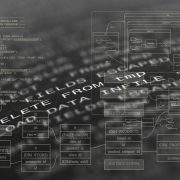Software is the collection of instructions that computers use to process data into information. This software guides the computer on what to do and helps users to interact with the computer as well. The software is created using a process that is known as software development. Software development is the process of creating software in successive steps in an orderly manner. These steps are also known as phases and are deliberate. These phases are collectively known as the Software Development Life Cycle (SDLC). The process of software development involves coding as well as design and evaluation of the final program. There are a number of phases of software development.
Software Development Life Cycle (SDLC)
This life cycle is made up of phases that are followed when developing software. The steps can be arranged according to a number of models. Each model has these phases of software development in a different order, and thus each model is unique to the next. Examples of these models are the waterfall, incremental, V and iterative model.
1. Research and Analysis Phase
The first step is the research and analysis phase. In this phase, the requirements of the business, where the software is going to be implemented, are collected and analysed. During the research and analysis phase, the project managers and business stake holders are consulted a lot. Factors, such as the people expected to use the software, how they will use it, as well as the input and output data, are determined. After this phase, a document known as the Requirement Specification is produced and used as a guide for the rest of the software development phases.
2. Design Phase
In this phase, the software’s physical and logical design is conducted. This is accomplished with the guidance of the Requirements Specification document. In physical design, the hardware requirements for the new software are determined. This is essential, since the hardware that is chosen in this step will be used to implement the software, once it is launched. The logical design of the software, which deals with the steps and processes the software will execute so as to perform its intended purpose, is also conducted at this stage.
3. Coding Phase
This is the period when the programmers actually get to write the software. This is done by use of special programming languages, for instance, Java, C, C++, C# and Python. The programmers in this phase depend on the Requirements Specification and the software design results to guide them in their coding. This phase is often the most time-consuming one in the entire SDLC.
4. Testing Phase
Once the software has been written, it is put under testing. This is done so as to see how it will perform when ti is implemented in the real world. The software is tested according to the Requirements Specification to see if it satisfies all the set requirements. Moreover, additional tests like unit, system, integration and acceptance tests are conducted as well. The real life conditions of the client are implemented in this phase and the software is tested for the developers to see if it can withstand the conditions and solve the problems that it was created for.
Benefits of the SDLC
There are a number of benefits of using the Software Development Life Cycle (SDLC) to develop software. To start with, you are able to create software in a cost-effective manner. The research and analysis as well as the design phase help to make software that meets the requirements of the client. Thus, there are no extra unnecessarily expensive features. Moreover, the SDLC helps to make a software product that is effective, as it meets the needs of the client and efficiently solves the intended problems. When the SDLC is followed to the letter, the resulting software is of high quality. This means that it will not have bugs and will perform as expected or even better than the client wished. Thus, the client is satisfied and their business benefits as well. The SDLC has phases that help the client and stakeholders to become part of the software development process, where they are allowed to give their reviews and insight. This results in a high quality product that satisfies their needs and promotes general satisfaction for the client and everybody else concerned.









